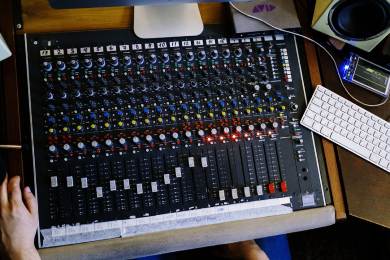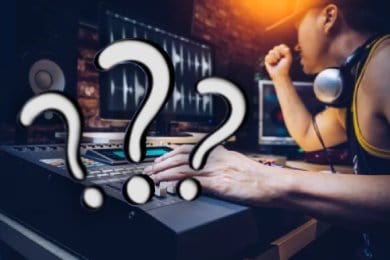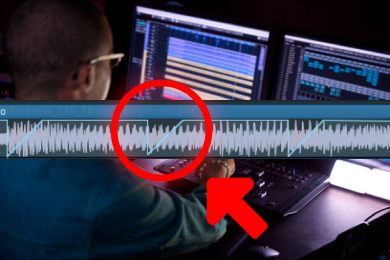EQing, or equalization, is the process of adjusting the tonal balance of an audio signal. This can be done with a graphic EQ or a parametric EQ.
The purpose of EQing is to make sure that all frequencies in the audio spectrum are represented in a way that sounds pleasing to the listener. This can be done by reducing or boosting frequencies using a parametric or graphic equalizer.
In this article, we will discuss the basics of EQing!
What is Equalization?
EQing, or equalization, is the process of adjusting the tonal balance of an audio signal. The purpose of EQing is to make sure that all frequencies in the audio spectrum are represented in a way that sounds pleasing to the listener.
There are many different ways to approach EQing an audio signal. One common method is to start by boosting or cutting certain frequency ranges until they sound good, then fine-tuning from there. Another approach is to first identify which frequencies are causing problems, then attenuate them accordingly.
No matter what method you use, there are a few general tips that will help you get the best results:
- Start with a broad EQ curve and then narrow in on specific problem areas.
- Be careful not to overdo it – sometimes less is more when it comes to EQing!
- Listen to your audio on multiple different systems to make sure that it sounds good in a variety of environments.
What is a Graphic EQ?
A graphic EQ is a type of equalizer that has adjustment sliders for specific frequency ranges and allows the user to see the frequency spectrum of an audio signal and adjust it accordingly.
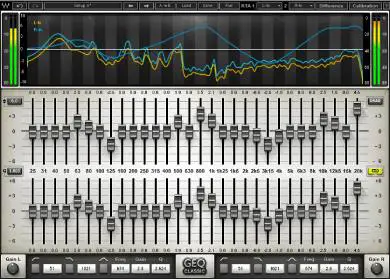
This can be done with a physical piece of equipment, or with software that emulates a graphic EQ. Graphic EQs are often used in live sound reinforcement to shape the overall sound of a mix.
What is a Parametric EQ?
A parametric EQ is a type of equalizer that provides more control over the frequencies being adjusted than a graphic EQ.
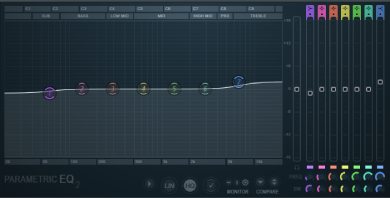
With a parametric EQ, the user can specify the center frequency, bandwidth, and gain for each filter. This can be very helpful for targeting specific problem areas in an audio signal. Parametric EQs are often used in recording and mixing to get a more precise sound.
What Are Harsh Frequencies?
Harsh frequencies are those that sound unpleasant to the ear. They can be caused by many things, including incorrect EQing. Harsh frequencies can make an audio signal sound tinny or harsh, and can be very difficult to listen to for extended periods.
Vocals can add many harsh frequencies due to how ‘s’ and ‘c’ sound affects the mix. De-essing is a method of reducing those harsh frequencies.
When EQing an audio signal, it is important to be careful not to boost or cut too much in the high-frequency range, as this can easily result in harsh-sounding audio.
If you do need to boost or cut certain frequencies in the high range, try using a parametric EQ so that you can specify a narrower bandwidth and avoid affecting other parts of the frequency spectrum.
What is Headroom?
Headroom is the amount of space between the peak level of an audio signal and the point at which it will start to distort. When mixing, it is important to leave enough headroom so that the audio does not sound over-compressed or distorted.
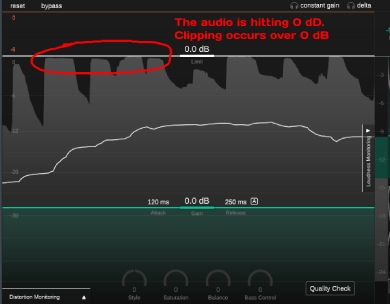
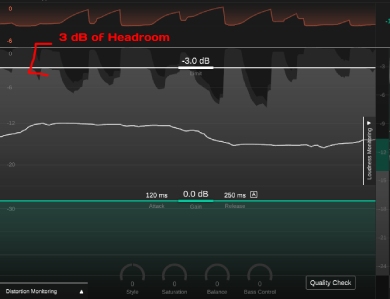
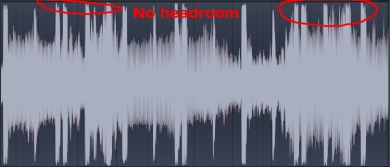
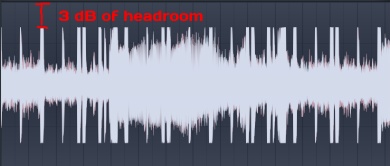
To ensure that there is enough headroom in a mix, it is often helpful to use a limiter on the master bus. This will prevent any individual track from exceeding a certain level and will give you some extra breathing room when mixing.
Headroom can also be increased by turning down the overall volume of the mix. This will give you more control over each individual track and allow you to avoid clipping or distortion.
What Are Low Frequencies?
Low frequencies are those that typically fall below the range 300Hz range. They can be felt more than they can be heard, and are often used to add weight or depth to an audio signal.
When EQing, it is important to be careful not to boost or cut too much in the low-frequency range. Highly boosted lows can easily result in a muddy-sounding mix, while lows that are cut too much can result in a thin-sounding mix.
If you do need to boost or cut certain frequencies in the low range, try using a parametric EQ so that you can specify a narrower bandwidth and avoid affecting other parts of the frequency spectrum.
Sidechaining is a technique that can be utilized to help control frequencies. One common example is interfering bass frequencies between a kick and bass. When the kick occurs you can side-chain it to the bass to dip the bass down in volume to avoid the conflict.
What Are High Frequencies?
High frequencies are those that fall above 5000Hz. They can make an audio signal sound bright or harsh, and are often used to add clarity or definition to a mix.
When EQing, it is important to be careful not to boost or cut too much in the high-frequency range, as this can easily result in harsh-sounding audio.
If you do need to boost or cut certain frequencies in the high range, try using a parametric EQ so that you can specify a narrower bandwidth and avoid affecting other parts of the frequency spectrum.
What is an EQ Curve?
An EQ curve is a visual representation of how an equalizer is adjusting the level of different frequencies in an audio signal. Each type of EQ has its own characteristic curve, and these can be used to help shape the sound of a mix.
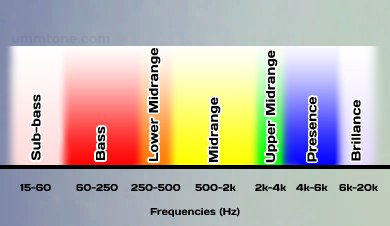
A graphic EQ will have a series of flat lines, each representing a different frequency band. A parametric EQ will have a more complex curve, with the shape depending on the settings of the individual filters.
Both types of EQ can be used to achieve a variety of results, and it is often helpful to experiment with different curves to see what sounds best for a particular track or mix.
What is an EQ filter?
An EQ filter is a component of an equalizer that allows the user to adjust the level of a specific frequency range. There are two main types of EQ filters: high-pass and low-pass.
Both types of filters can be adjusted to affect a wide range of frequencies, and each has its own characteristic sound. It is often helpful to experiment with different cutoff points to see what sounds best for a particular track or mix.
High-pass Filter
A high-pass filter, also known as a low-cut, allows frequencies above a certain cutoff point to pass through while attenuating those below it. This can be used to remove unwanted low-frequency noise from an audio signal.
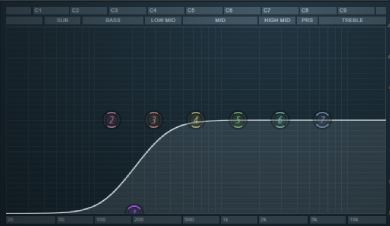
Low-pass Filter
A low-pass (high-cut) filter allows frequencies below a certain cutoff point to pass through while attenuating those above it. This can be used to create a warmer sound by reducing the high-frequency content of an audio signal.
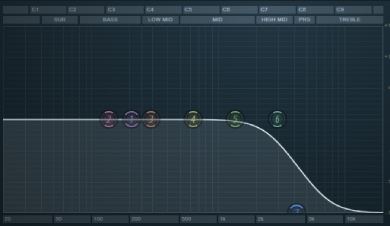
Conclusion
EQing is an important part of the mixing process and can be used to shape the sound of a track or mix. By understanding how EQ works and experimenting with different settings, you can achieve a variety of results.
With practice, you will develop a feel for how EQ can be used to enhance the sound of an audio signal.
EQing is an important part of the mixing process and can be used to shape the sound of a track or mix. By understanding how EQ works and experimenting with different settings, you can achieve a variety of results. With practice, you will develop a feel for how EQ can be used to enhance the sound of an audio signal.
